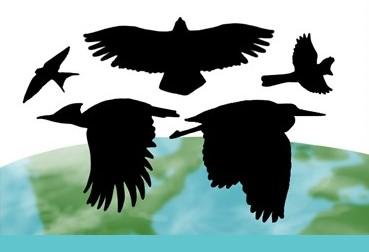
I admire birds. They can fly under their own power and I cannot. In many ways I find them beautiful and in many more ways fascinating. Each February since 1998 Cornell Lab of Ornithology and the National Audubon Society have sponsored the Great Backyard Bird Count (GBBC.) This is a citizen science effort, created to collect data on wild birds and to display results in near real time.
The count takes place over four days: this year February 12 -15. The protocol for counting and submitting your results can be found on the website. You can visit a park, count birds in your neighborhood, or count birds on your bird feeder without even going outside! One of my more memorable birds from a past GBBC, was a little (4.25 inches) Ruby-Crowned Kinglet, right outside my window, in the middle of a blizzard!
Getting outside is good for us in many ways, observing and recording birds is one way to make your outing more meaningful and memorable. From the GBBC website here is their COVID-19 Statement:
“Watching birds is a safe and enjoyable activity we can do during the Covid global pandemic. For the 2021 Great Backyard Bird Count, we strongly urge participants to comply with all current country, province, state, or municipal Covid-19 regulations and guidelines. This includes, but is not limited to, social distancing while bird watching and wearing a mask when birding with others.”
So, get out there and enjoy the benefits of fresh air sunshine and exercise. Did you know that being in nature can improve your mood and boost your immune system? The observational/intellectual puzzle of identifying our avian neighbors adds a layer of investigation to your outdoor explorations.
Who are those birds we might be seeing? We have books (and DVDs) to help you identify birds, they can be found in our non-fiction section. The call numbers that relate to birds span 598 to 599. Last year’s blog about the GBBC has many suggestions for books to help you identify birds as well as attract them to your yard and determine which native plants will provide habitat and food.
This time of year, with the leaves off the trees we have a better chance of spotting our feathered friends, but it can still be challenging to see them, and you really need binoculars to note details. One of the best ways to identify birds is by their calls and songs. This is especially useful when the leaves are out on the trees and in the spring when there is a lot of singing. It is very helpful to join with more experienced birders to learn which song goes with which bird and other tips for successful observation. We are fortunate since we have a local Audubon Chapter in our area, The Northern Shenandoah Valley Audubon Society. For the past two GBBCs the Northern Shenandoah Valley Audubon Society has conducted bird surveys on the library property. We currently have 39 different species observed. Last year we added the Belted Kingfisher. The Library Loop Trail around the lake provides a great opportunity for observation. Enjoy the long weekend and enjoy the birds!

